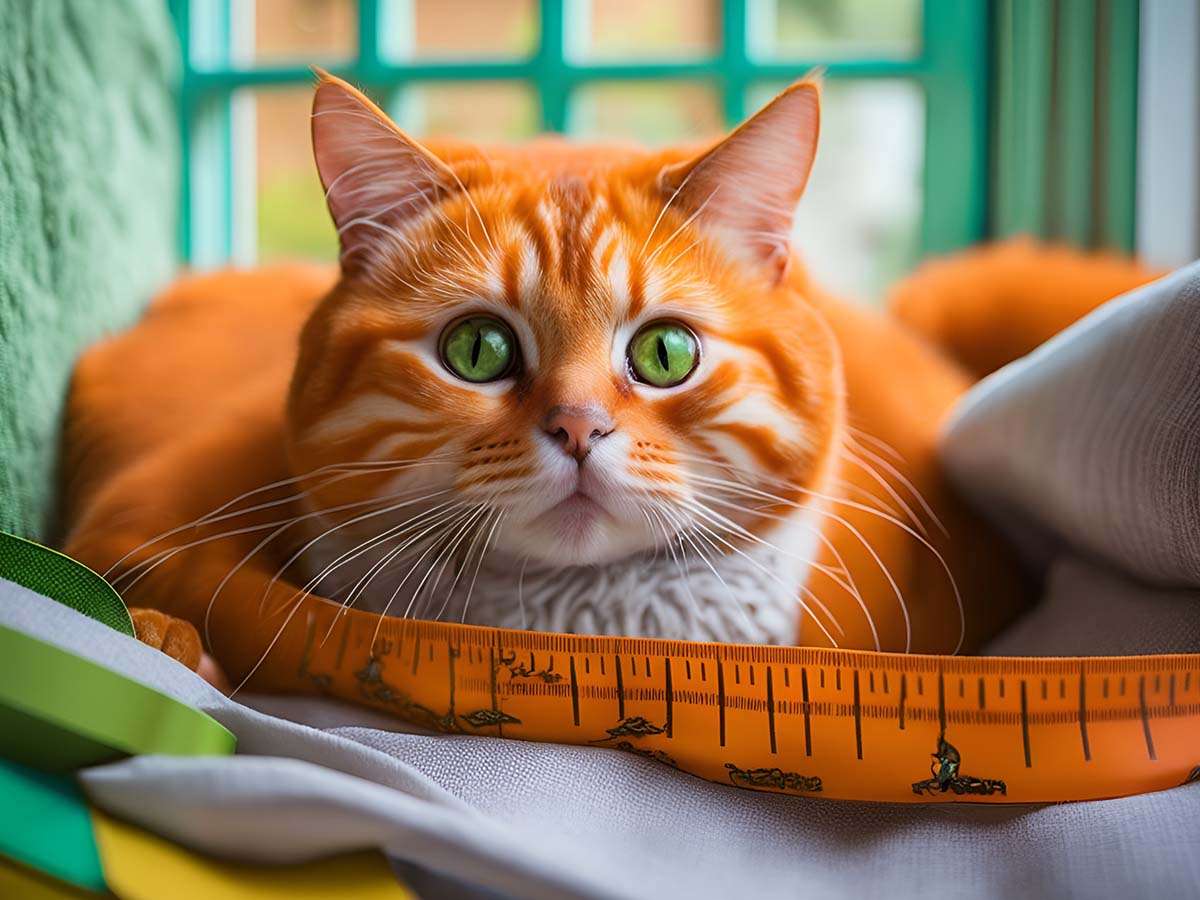How to Measure Your Cat for Harnesses, Collars, Clothes, and Carriers
Measuring a cat might not be the first thing that comes to mind when you think of feline adventures, but believe it or not, it’s a crucial step before embarking on outdoor escapades with your furry friend. As a cat owner, you know how unpredictable and feisty our little feline friends can be, and the last thing you want is a harness that’s too tight or a carrier that’s too small. In this blog post, we’ll guide you through the art of measuring your cat for harnesses, collars, clothes, and carriers, ensuring their comfort and safety during your adventures together.
Accurately measuring your cat is essential for finding the right fit for various items, including harnesses, carriers, cat backpacks, and even cat clothes. But as we all know, cats can be quite the challenge to measure, especially when they’re more interested in playing with the measuring tape than sitting still! But worry not, dear cat lovers, as we’ll provide you with tips and tricks to overcome these challenges.
Quick Guide: Harness Size Calculator and Measuring Tips
How to measure a cat?
Start by gently holding your cat in a relaxed position. With a soft measuring tape, measure your cat’s neck circumference, girth (chest), and body length from the base of the neck to the base of the tail. Make sure the tape is snug but not tight. These measurements are essential for finding the best-fitting harness, collar, carrier, or clothes that will keep your furry friend comfortable and safe while exploring the great outdoors.
Alright, cat aficionados, get ready for some feline fashion magic! ✨ Our cat harness size calculator is here to help you find the ultimate fit for your furry friend’s outdoor adventures.
Cat harness size calculator
Please be aware that this Cat Measurement Calculator is designed to provide a general idea of the appropriate harness size for your cat based on their weight, chest girth, and body length. The size ranges used in this calculator are not specific to any particular cat harness brand.
Different harness brands may have their own unique sizing criteria, and we recommend that you consult the sizing chart provided by the manufacturer of the harness you are interested in purchasing for the most accurate sizing information.
Keep in mind that some harnesses are adjustable within a specific size range, which may allow for a better fit for your cat. Additionally, factors such as your cat’s breed, age, and specific measurements can also influence the best size choice.
This calculator is intended as a starting point to help you estimate the right harness size for your cat. Always verify the sizing information with the manufacturer and consider your cat’s individual characteristics to ensure the best fit and comfort.
“A cat’s size is irrelevant when it comes to their ability to take over the bed.”
– Unknown
Now that you’ve got the basics down, we invite you to continue reading our comprehensive guide below. We’ll walk you through everything you need to know about measuring your cat for various pet accessories, along with tips and tricks for making the process easier and more enjoyable for both you and your feline friend. Let’s get started!
Essential Measurements for Your Cat
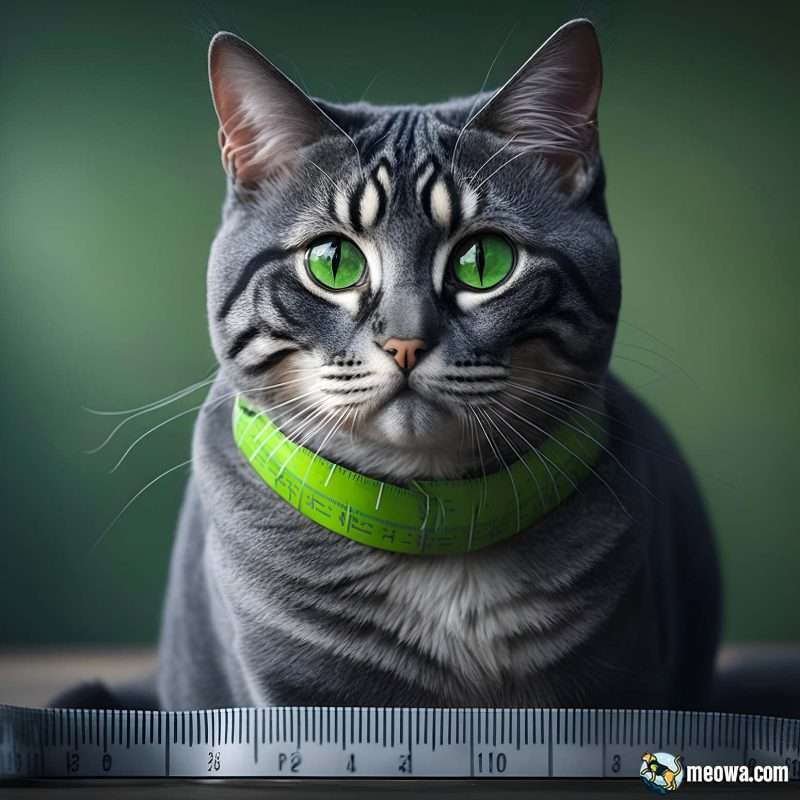
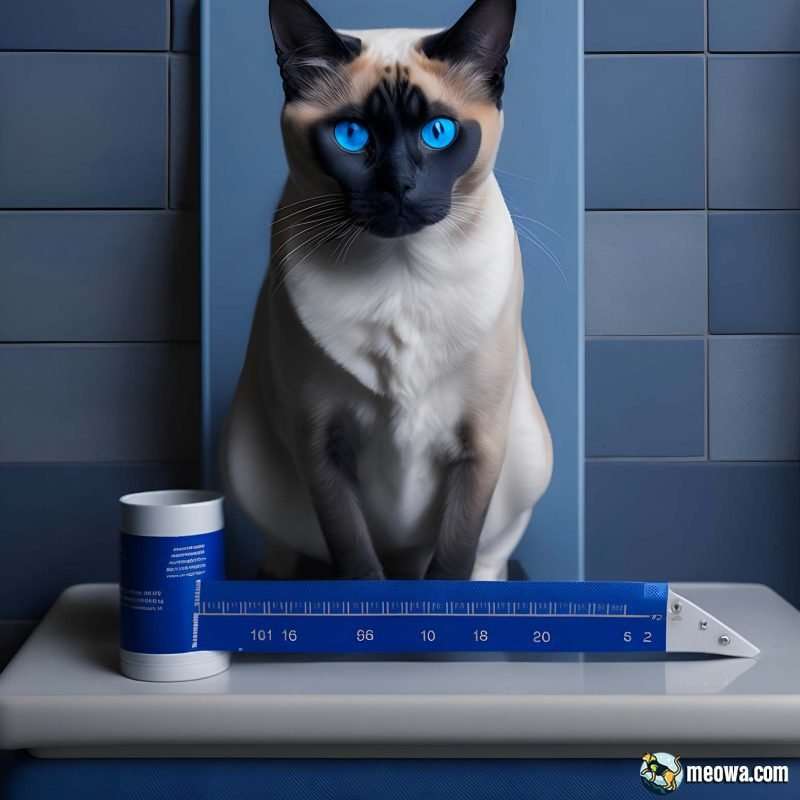
When it comes to measuring a cat, there are four primary dimensions to consider: neck size, chest size (girth), length, and height. Let’s dive into each of these measurements, their importance, and tips on how to measure your cat accurately.
Neck Size
Neck size is an essential measurement for collars, harnesses, and some types of cat clothing. An accurate neck measurement ensures that the collar or harness is not too tight, which could cause discomfort or restrict breathing, or too loose, which could result in your feline friend slipping out of it.
To measure your cat’s neck size, follow these tips:
- Use a soft, flexible measuring tape (the kind used for sewing) that can easily wrap around your cat’s neck.
- Place the measuring tape around the base of the neck, where a collar would naturally sit.
- Ensure the tape is snug but not too tight; you should be able to fit two fingers comfortably between the measuring tape and your cat’s neck.
- Record the measurement in inches or centimeters.
Chest Size (Girth)
What is girth on a cat? Girth on a cat refers to the circumference of the cat’s chest, measured at the widest point, which is typically just behind the front legs.
Girth, or chest size, is another critical measurement when fitting your cat for a harness, clothes, or even some carriers. A proper chest size measurement ensures that the harness or clothing is comfortable, allows for a full range of motion, and prevents any risk of injury or escape.
To understand what girth is, imagine wrapping a measuring tape around your cat’s chest, just behind their front legs. This measurement is your cat’s girth.
Here are some tips for measuring your cat’s chest size (girth) accurately:
- Use a soft, flexible measuring tape that can easily conform to your cat’s body shape.
- Locate the widest part of your cat’s chest, which is typically just behind the front legs.
- Wrap the measuring tape around the chest, ensuring it’s snug but not too tight.
- Record the measurement in inches or centimeters.
“A cat’s size is measured not by how big they are, but by how big they think they are.”
– Unknown
Length
Length is another vital measurement for clothing, carriers, and even determining if your cat is of average size or perhaps a contender for the feline long-jump Olympics! Alright, there might not be a feline long-jump Olympics, but it’s still essential to know your cat’s length for various reasons.
Here are some tips to measure your cat’s length accurately while keeping your feline friend entertained:
- Use a soft, flexible measuring tape to ensure it can follow the contours of your cat’s body.
- Encourage your cat to stand or stretch out on a flat surface, preferably when they’re not in the middle of a nap, as we know how grumpy they can get when disturbed!
- Start at the base of your cat’s neck (where the collar would sit) and measure along the spine to the base of the tail.
- Record the measurement in inches or centimeters.
Now, the age-old debate: does cat length include the tail? For our purposes, and most product sizing, we’ll focus on the body length, not including the tail.
Height
Cat height might not be the first thing that comes to mind when measuring your feline friend, but it can be essential for specific carriers, backpacks, and furniture, like cat trees. A well-measured height ensures your cat can stand tall and proudly while exploring the world in their carrier or surveying their domain from their cat tree throne.
To measure your cat’s height while keeping their curiosity piqued, follow these tips:
- Grab a soft, flexible measuring tape and a couple of treats to persuade your cat to cooperate.
- Encourage your cat to stand on all four paws on a flat surface. If they’re too busy grooming or plotting world domination, a gentle nudge or a treat might do the trick.
- Place one end of the measuring tape on the ground, and measure straight up to the highest point of your cat’s shoulder blades. Avoid including those majestic whiskers in your measurement!
- Record the measurement in inches or centimeters.
Remember, bribing your cat with treats during this process not only makes it more enjoyable for both of you, but it may also secure you a place in their good graces when they finally take over the world.
Using Size Charts and Determining Sizes by Weight
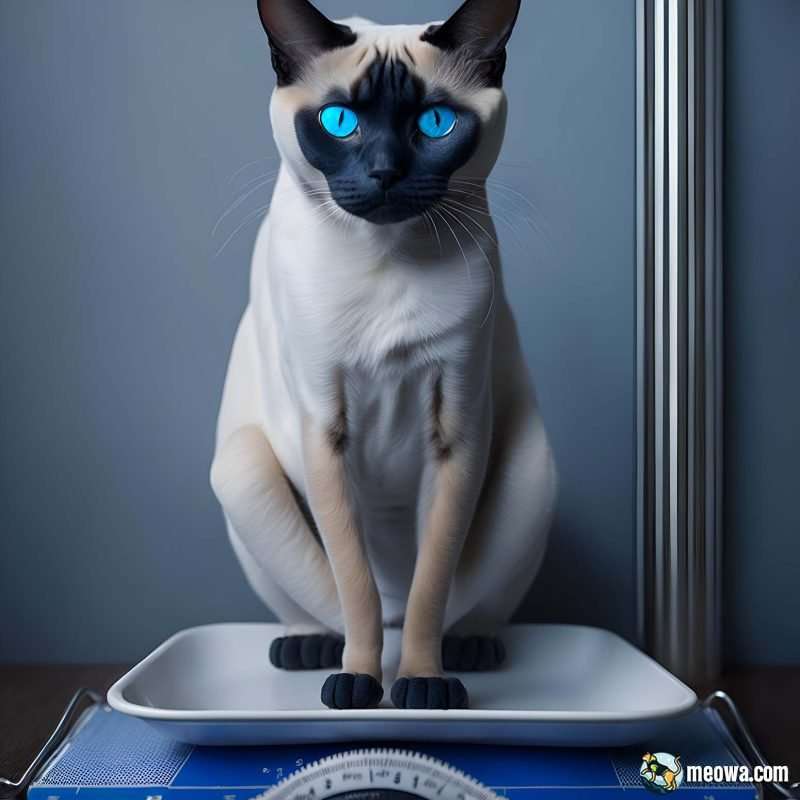

Size charts are your best friends when it comes to choosing the perfect fit for harnesses, collars, clothes, or carriers for your cat. They help ensure your cat’s comfort and safety by taking the guesswork out of sizing. In some cases, determining the right size for your cat may also involve considering their weight.
In general, male cats are larger than female cats. However, there are some breeds where females are larger than males, such as the Norwegian Forest Cat.
Here’s some useful information to help you navigate size charts and make the right choices for your furball:
- Cat harness size by weight: Most harnesses will provide a size chart based on girth measurements, but they may also offer a suggested weight range. For example, a small harness might be suitable for a cat weighing 5-8 pounds (2.3-3.6 kg) with a girth of 12-18 inches (30-46 cm).
- Determining the size for a 14-pound (6.4 kg) and 16-pound (7.3 kg) cat: Cats in this weight range may require a large or extra-large harness, but always refer to the specific product’s size chart and measure your cat to ensure the best fit.
- Average cat girth and weight: An average domestic cat typically has a girth of around 12-18 inches (30-46 cm) and weighs between 8-10 pounds (3.6-4.5 kg).
- Average cat measurements: While individual cats will vary, the average cat stands about 9.1-9.8 inches (23-25 cm) tall, measures 18 inches (46 cm) long (excluding the tail), and has a girth of 12-18 inches (30-46 cm).
Remember, always consult the size chart provided by the manufacturer and measure your cat to ensure a perfect fit. After all, a comfortable cat is a happy cat, and a happy cat means fewer surprise “presents” left in your shoes.
Measuring Your Cat for Specific Items

Each type of cat accessory has its unique sizing requirements. From collars and harnesses to clothing and carriers, accurate measurements are crucial to ensure your cat’s comfort and safety while they strut their stuff in style.
How to measure a cat for a harness
Harnesses offer a safer and more comfortable alternative to collars when walking your cat or providing them with controlled outdoor experiences. To ensure the perfect fit, follow these informative steps:
1. Taking accurate measurements
Measure both your cat’s chest girth and neck circumference for a precise fit. To measure the chest girth, wrap the measuring tape around the widest part of your cat’s chest, typically just behind their front legs. For neck circumference, measure around the base of the neck where a collar would typically sit. Be sure to use a soft, flexible measuring tape and maintain a snug but comfortable fit.
Tip: Measure your cat when they are calm and relaxed, as a tense body can lead to inaccurate measurements.
2. Consult the size chart
Different harness manufacturers may have varying size standards. Always refer to the specific brand’s size chart to determine the appropriate size based on your cat’s measurements. Keep in mind that some harnesses are designed for specific cat breeds or body shapes, so choose one that best suits your cat’s unique physique.
Tip: Take a screenshot or print out the size chart for easy reference while shopping for a harness.
3. Adjustability and customization
Look for a harness that offers adjustable straps and multiple points of customization to ensure a secure and comfortable fit. A well-fitted harness should be snug without causing discomfort or restricting your cat’s movement. It’s crucial to adjust the harness to accommodate your cat’s body shape and allow for any changes in their size or weight over time.
Tip: Practice adjusting the harness before putting it on your cat to familiarize yourself with the various adjustment points.
4. Test the fit
Once you have selected and adjusted the harness, perform a fit test. Place two fingers between the harness and your cat’s body to ensure there’s enough room for them to breathe and move comfortably. Monitor your cat’s behavior to ensure they can walk, sit, and lie down without any issues.
Tip: Allow your cat to wear the harness indoors for short periods to help them acclimate to the new sensation before venturing outside.
By following these detailed steps and tips, you’ll be able to find a harness that provides the perfect balance of comfort, security, and functionality for your cat’s outdoor adventures.

Katkin Reflective Harness Vest & Leash Set
Color: Red, Size: M
How to measure a cat for a carrier or cat backpack
Ensuring a proper fit for your cat’s carrier or cat backpack is crucial to their comfort and safety during travel, whether it’s a routine visit to the vet or an exciting outing. Adhere to the following guidelines for optimal results:
- Use a soft, flexible measuring tape to measure your cat’s dimensions, including their height (from the top of their head to the ground), length (from the tip of their nose to the base of their tail), and width (across the widest part of their body).
- Account for extra space to allow your cat to move freely. Choose a carrier that is large enough for your cat to stand up, turn around, and lie down comfortably without feeling cramped. As a general rule, add at least 2-4 inches (5-10 cm) to each of your cat’s measurements when selecting a carrier.
- Examine the carrier’s design for proper ventilation and visibility. The carrier should have sufficient mesh or ventilation openings to ensure a consistent flow of air, which is necessary for your cat’s wellbeing. Moreover, these openings should allow your cat to see their surroundings, which can help alleviate stress during travel.
- Consider the weight capacity of the carrier or backpack, as well as its overall durability. Ensure that the product you select is sturdy enough to support your cat’s weight and withstand potential wear and tear from travel.
- Look for carriers or backpacks with padded straps, comfortable handles, and secure closures to make the transport experience more enjoyable for both you and your cat.
Additionally, we recommend reading our comprehensive guide on the features to look for in a cat backpack carrier. This guide will provide you with essential information to help you make the best choice for your feline friend’s travel needs. Visit our Cat Backpack Carriers Guide to discover expert tips and advice for selecting the perfect carrier.
How to measure a cat for a collar
A collar that’s too tight can be uncomfortable, while one that’s too loose may allow your cat to slip out of it or get caught on something. To avoid these issues, follow these guidelines:
- Use a soft, flexible measuring tape to measure your cat’s neck circumference.
- Add about 2 inches (5 cm) to the measurement, allowing for the famous “two-finger space rule” – you should be able to fit two fingers comfortably between the collar and your cat’s neck.
- Opt for a quick-release or breakaway collar to ensure your cat’s safety should they get caught on something during their secret midnight adventures.
How to measure a cat for clothes or costumes
Dressing up your cat in adorable outfits is an irresistible temptation for many cat owners. Here’s how to measure your cat for clothing or costumes:
- Measure your cat’s neck, chest (girth), and length to ensure a comfortable fit.
- Keep in mind that measurements may vary based on the type of clothing or costume, so always refer to the specific product’s size chart.
- For headpieces, make sure they fit comfortably without obstructing your cat’s vision or hearing.
How to measure a cat for a cone
A properly fitted cone, also known as an Elizabethan collar or E-collar, is essential to prevent your cat from grooming or licking wounds after surgery or during recovery from an injury. To measure your cat for a cone, follow these steps:
- Measure your cat’s neck circumference using a soft, flexible measuring tape. Ensure that the measuring tape is snug but not too tight, allowing for a comfortable fit.
- Measure the distance from your cat’s neck to the tip of their nose. This will help you determine the length of the cone required to prevent your cat from reaching the affected area.
- Refer to the sizing chart provided by the cone manufacturer, as sizes may vary between brands. Use the neck circumference and cone length measurements to select the appropriate size for your cat.
- Opt for a cone that is made from soft, lightweight, and durable materials, as this will provide the most comfort for your cat during their recovery period.
- When fitting the cone on your cat, ensure it is secure but not too tight. You should be able to fit two fingers comfortably between the cone and your cat’s neck. Make sure the cone extends past the tip of their nose to prevent them from reaching any wounds or injuries.
Tips for Measuring Your Cat
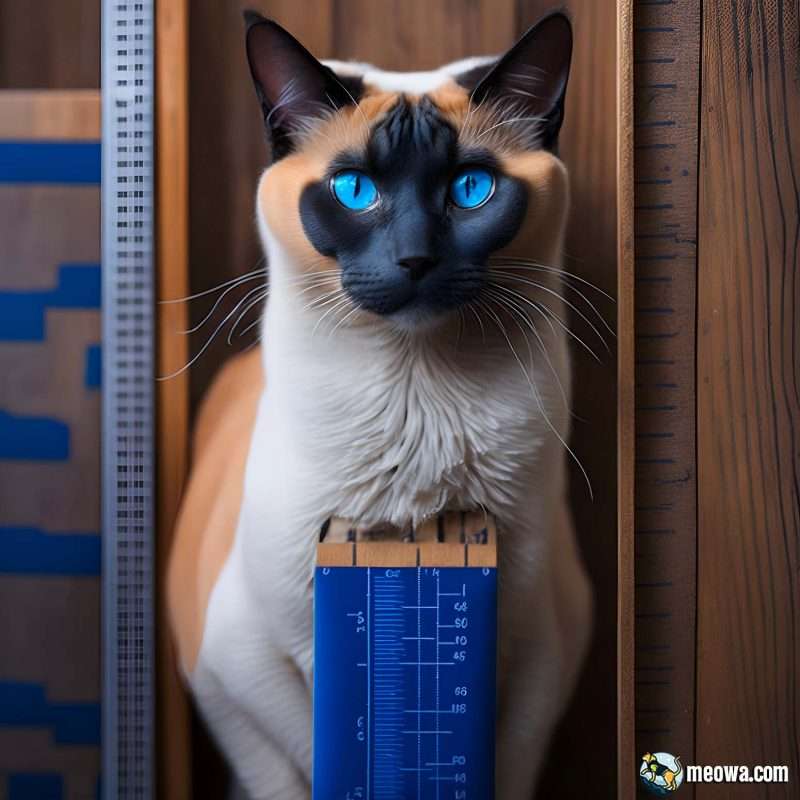

Measuring a cat can sometimes feel like trying to catch a fish with your bare hands, but don’t worry – with the right approach, you’ll have your cat’s measurements in no time. Here are some helpful strategies to make the process easier:
Weighing Your Cat
- Use a digital bathroom scale: Weigh yourself first, then weigh yourself while holding your cat, and subtract your weight from the combined weight.
- Use a baby or pet scale for more accurate results.
- If all else fails, consult your vet for an accurate weight measurement during your cat’s next checkup.
Cat Weight Facts
- The average weight for a domestic cat is around 9-10 pounds, but they can range from 5 to over 20 pounds depending on their breed.
- The size of a cat can also vary based on their diet and lifestyle. Indoor cats tend to be smaller than outdoor cats, and cats that are overfed or not given enough exercise can become overweight or obese.
- According to a survey conducted by the Association for Pet Obesity Prevention, an estimated 59% of cats in the United States are overweight or obese.
Strategies for Easier Cat Measurement
Taking your cat’s measurements can be a bit tricky, but with the right techniques, you’ll get the job done without breaking a sweat. Consider the following tips for a smoother process:
- Using a clothing measuring tape: A soft, flexible measuring tape is perfect for measuring your cat’s neck, girth, length, and height. It’s less likely to bother your cat compared to a rigid tape measure, which is a win-win!
- Enlisting a helper: Have a friend or family member assist you by holding your cat, distracting them, or handing you treats as needed. Cats have a knack for slipping away when you least expect it, so teamwork is key.
- Having treats nearby: Reward your cat with their favorite treats during and after the measuring process. This will help create positive associations and make future measuring sessions easier.
- Choosing a calm time of day: Pick a time when your cat is naturally relaxed and less likely to squirm, such as after a meal or a play session. A sleepy cat is much more cooperative!
- Turning it into playtime: Engage your cat with a toy or a play session while measuring them. It’ll not only make the experience more enjoyable for both of you, but it’ll also help distract your cat from the measuring process.
Common Mistakes to Avoid When Measuring Your Cat (Feline Faux Pas Edition)
Getting accurate measurements of your cat is essential for their comfort and safety when fitting them for collars, cones, carriers, or clothing. But it can feel like a feline-themed escapade. To help you navigate this cat-measuring adventure, here are some common mistakes to avoid. Keep these points in mind to achieve accurate measurements:
- Incorrect use of measuring tools: Ditch the metal rulers and yardsticks for home projects; opt for a soft, flexible measuring tape when taking your cat’s measurements. Rigid tools can turn the process into an epic battle between you and your furry friend, and we all know who usually wins those.
- Measuring too tight or too loose: When measuring your cat’s body, avoid the Goldilocks dilemma. The tape should be snug but not constricting, allowing for natural movement and breathing. After all, you wouldn’t want your cat to feel like they’re wearing a fluffy boa constrictor, would you?
- Not accounting for your cat’s fur: If your cat has long or thick fur, remember to factor it in when measuring. Press the measuring tape gently against their fur and consider adding a small allowance for fur thickness. Your cat’s stylish new collar or outfit shouldn’t be hidden beneath their majestic fluff.
- Rushing through the process: Channel your inner Zen master and take your time when measuring your cat. They might not transform into a cooperative statue, but a calm and relaxed approach can work wonders. If necessary, enlist a cat-whispering friend to hold your cat still or distract them with treats or toys.
By avoiding these common mistakes, you’ll achieve accurate measurements that will help you select the most comfortable and safe products for your cat. Good luck, and may the feline force be with you!
Understanding Cat Sizes and Dimensions: Feline Fun Facts Edition
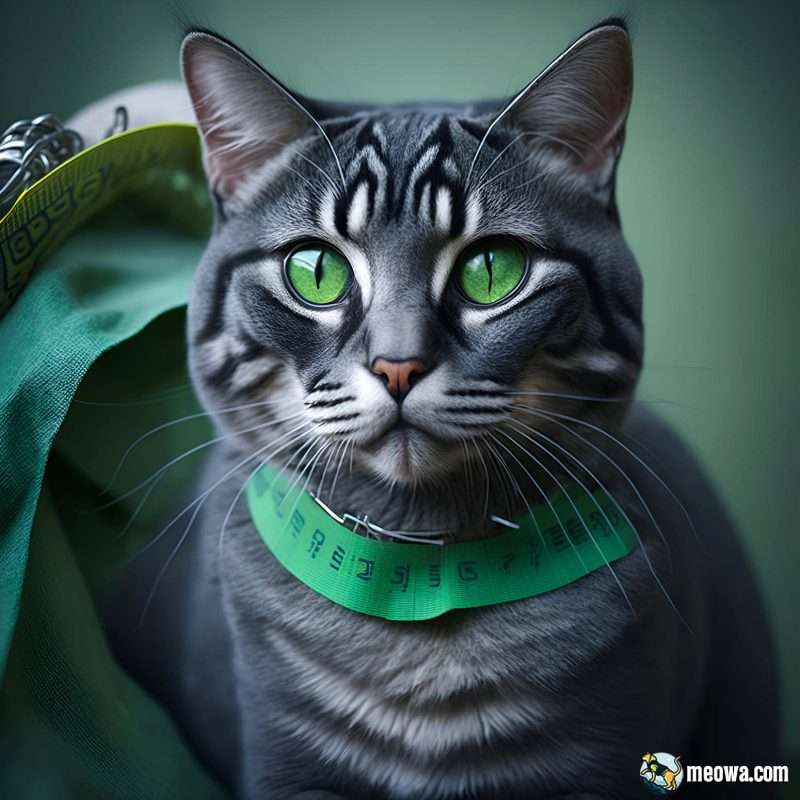
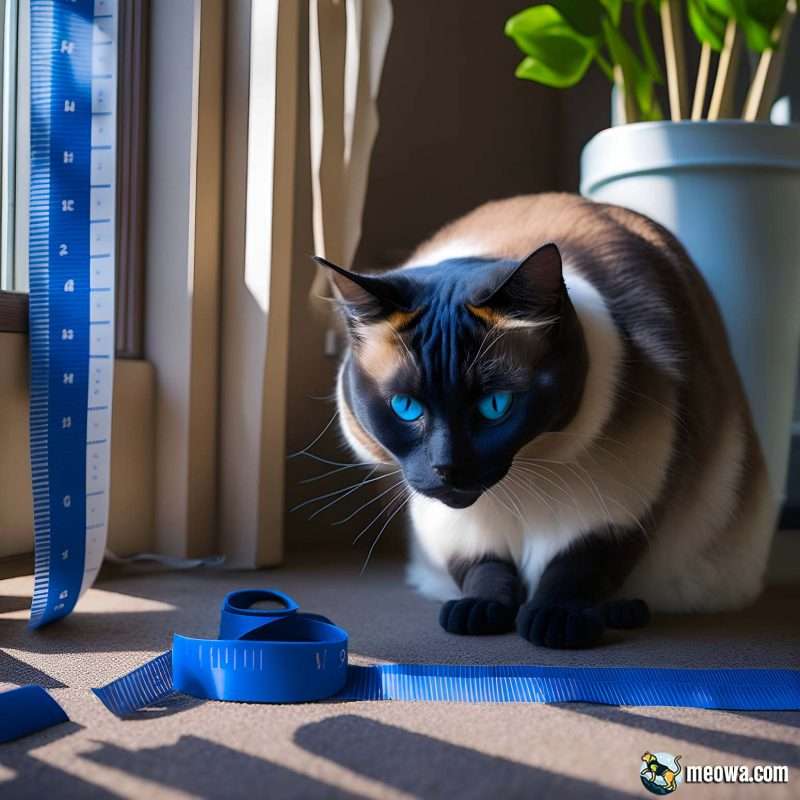
Cats are like snowflakes, each one unique and beautiful in its own right. They come in all shapes and sizes, from the petite Singapura to the majestic Maine Coon. Breed, age, and weight are some of the factors affecting cat sizes, and it’s essential to understand these dimensions when looking for the perfect fit for harnesses, carriers, or clothes for your feline companion.
In ancient Egypt, cats were often depicted as large and powerful creatures. This is believed to be because they were associated with the goddess Bastet, who was often portrayed as a lioness.
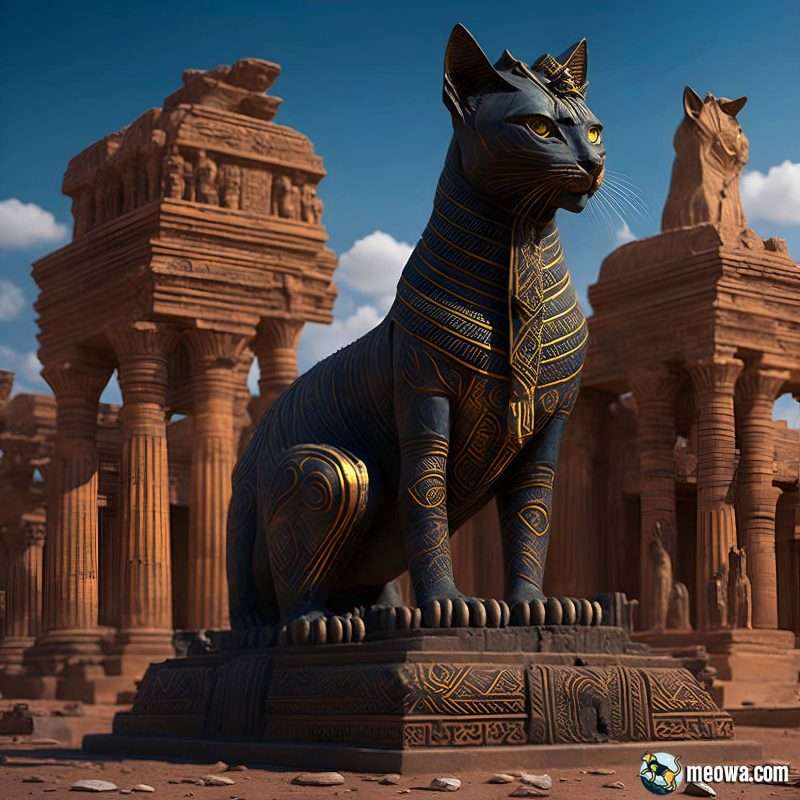
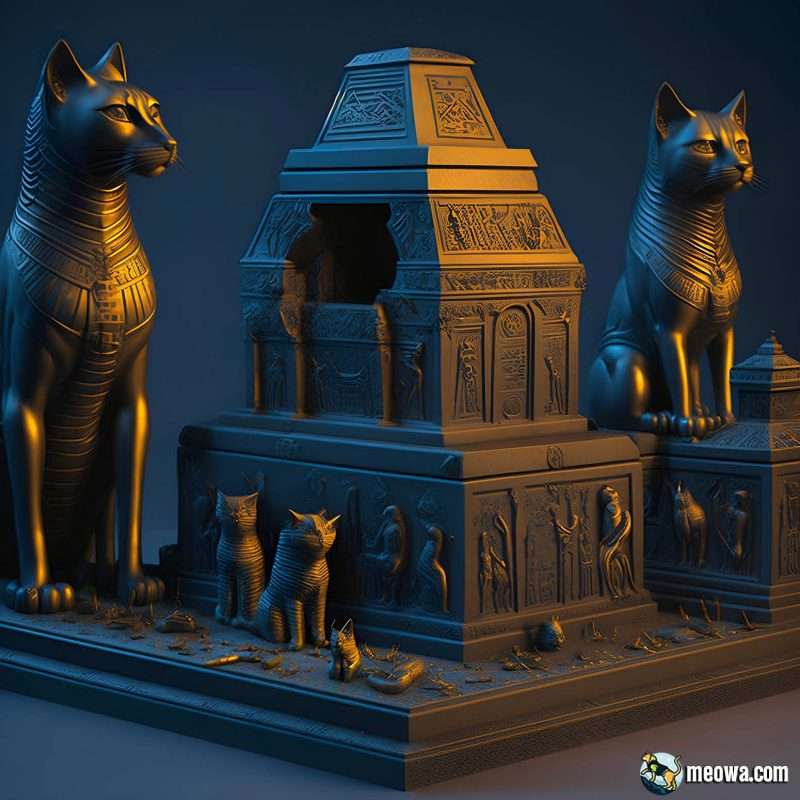

Let’s have a little fun and dive into some averages and quirky facts to get a better understanding of cat sizes and dimensions:
- Dimensions of a domestic cat: The average domestic cat stands about 9.1-9.8 inches (23-25 cm) tall, 18 inches (46 cm) long (excluding the tail), and weighs between 8-10 pounds (3.6-4.5 kg). Talk about a purr-fectly average-sized furball!
- Average size of a tabby cat: Tabby cats, which are not a specific breed but a color pattern found in many breeds, generally fall within the average cat size range mentioned above. Stripes are always in style!
- Normal length of a cat: The normal length of an adult domestic cat, excluding the tail, is about 18 inches (46 cm). Did someone say tape measure?
- Length of a fully stretched cat: When fully stretched, an average cat’s length, including the tail, can reach up to 30 inches (76 cm). Talk about a feline yoga master!
- What is the average back length of a cat? The average back length of a domestic cat, excluding the tail, is about 9-10 inches (23-25 cm). But let’s be honest, cats come in all shapes and sizes, so this measurement can be as reliable as a cat’s promises not to wake you up at 5 am for breakfast.
- The longest cat on record: The world’s longest domestic cat on record was a Maine Coon named Stewie, who measured 48.5 inches (123 cm) from nose to tail.
- The heaviest cat on record: The world’s heaviest domestic cat on record was a tabby named Himmy, who weighed in at a whopping 46 pounds (21 kg).
- The smallest cat breed in the world: The world’s smallest cat breed is the Singapura, which typically weighs only 4-8 pounds (1.8-3.6 kg).
- The tallest cat breed in the world: The world’s tallest cat breed is the Savannah, which can grow up to 20 inches (50 cm) tall at the shoulder.
- How many digits cats have on their back paws? Most cats have four toes on each back paw, plus a dewclaw (similar to our thumb) that’s higher up on the leg. There are, however, polydactyl cats with extra toes, which gives them an advantage when it comes to playing the piano or giving high-fives. (Or should that be high-sixes? 🤔)
Now that we’ve explored the wild world of cat dimensions, you’ll have a better idea of what to expect when measuring your own furry friend. Happy measuring!
Conclusion
Accurately measuring your cat for harnesses, collars, clothes, and carriers is essential for ensuring their comfort, safety, and happiness during their outdoor adventures. With the tips provided in this guide, you’ll be well on your way to finding the perfect fit for your feline friend. Now that you’re armed with this knowledge, it’s time to explore various products and accessories to make your cat’s outdoor experiences enjoyable and memorable.
Don’t forget to check out more content on our blog, and be sure to visit our guides on escape-proof cat harnesses, cat harness training and cat backpacks vs. carriers to enhance your feline adventures even further. Happy measuring, and may your cat’s outdoor escapades be both stylish and comfortable!
People Also Ask
What factors can affect my cat’s measurements over time?
Factors like age, weight fluctuations, and fur growth can affect your cat’s measurements over time. Regularly check and update your cat’s measurements to ensure their collar, harness, or carrier remains comfortable and safe.
How can I ensure accurate cat measurements when my cat is uncooperative?
To measure an uncooperative cat, try to create a calm environment and use treats, toys, or praise to encourage cooperation. You can also ask a friend or family member to help hold and comfort the cat while you take measurements.
Are there cat measurement guidelines for specific cat breeds?
Some cat breeds have unique body shapes or characteristics that may require special considerations when measuring. Consult breed-specific resources or consult with a veterinarian for guidance on measuring your specific cat breed.
How often should I check the fit of my cat’s collar, harness, or carrier?
Regularly check the fit of your cat’s collar, harness, or carrier, especially if they are still growing or have experienced weight changes. Adjust the fit as needed to maintain comfort and prevent escape.
What if my cat’s measurements fall between two sizes for a harness or carrier?
If your cat’s measurements fall between two sizes, it’s generally recommended to choose the larger size and adjust it for a snug fit. This allows for added comfort and room for growth or weight fluctuations.
How can I prevent my cat from slipping out of its harness or carrier?
To prevent your cat from slipping out of its harness or carrier, ensure proper fit by regularly checking and adjusting the item based on your cat’s measurements. Choose a secure design with additional safety features, such as escape-proof harnesses or carriers with locking zippers.

